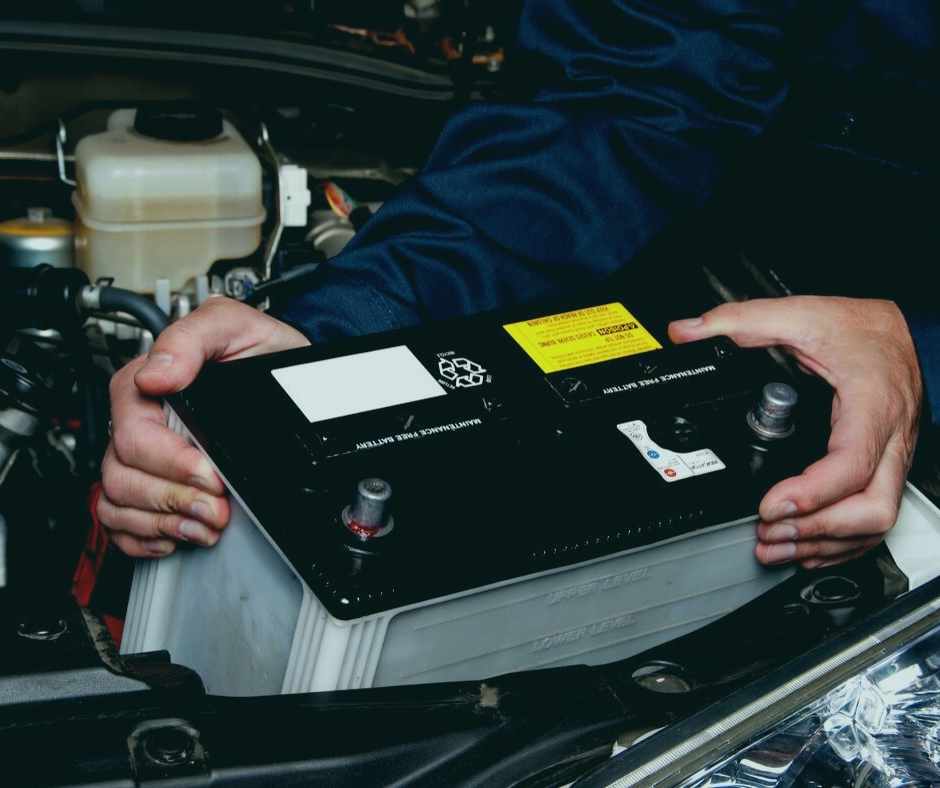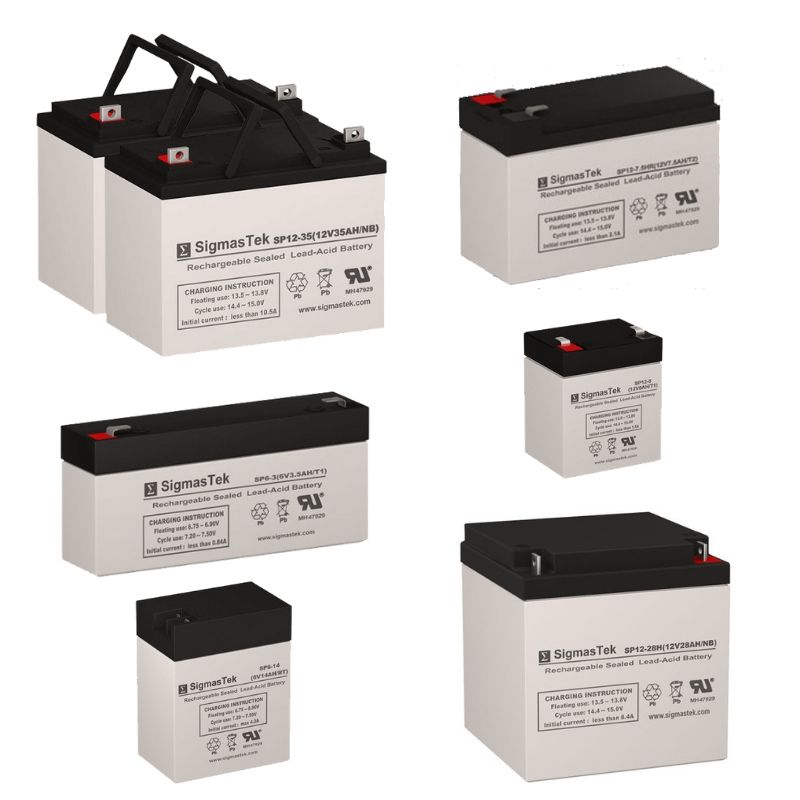What is an Accumulator and How Does It Work?
Accumulators are called devices in which electrical energy is converted into chemical and vice versa, as opposed to ordinary batteries, which cannot be recharged after dilution. When we turn on the battery poles to a DC source, it starts charging the battery. There is accumulation of chemical energy. During battery operation, chemical energy is transformed into electrical by means of current-forming processes and the battery is discharged, i.e. works as a galvanic element. It can then be reloaded. Each accumulator consists of positive and negative plates placed in a vessel in which an electrolyte is charged. The accumulator works as a chemical source of current with reversible multi-barrier effect.
The maximum possible useful battery charge is called its charging capacity or just capacity. In the international system of indications of electrical quantities, the capacity of the batteries is measured in cubes C, but in the everyday popularity has found the extra-unit ampere. The connection between the two is 1 C = 1/3600 amps or 1Ah = 3600C.
Although the battery is
by definition a recharging and discharging unit over time, its current and
voltage gradually fall with the depletion of the chemical energy produced by
its cells, since we know that the batteries are secondary sources of
electricity. At the end of its service life, the battery just stops acting.
Several factors have to be taken into account when charging. The most common
rule is that the charging current should be one-tenth of the battery capacity
in the ampere hour.
Example: If the battery is 62Ah and the charger current is 1A, the charging
time is 62 hours. The second factor is that the charging current should not be
greater than 6.2A for the example case. The charging voltage must be higher by
several volts of the rated battery voltage at rest. If it is slightly larger,
charging will be slower, but saturation will be fuller. It is harmful to the both the recharging and non-charging battery. I will not go into details because there are many things written about the subject. The main
parameters of the batteries are ELD (electromotive voltage), capacity,
efficiency, durability, self-discharge time, internal resistance, terminal
voltage, weight and dimensions.
Types of accumulators
Main types
1. Lead (acid) accumulators.
2. Alkaline batteries
- iron nickel accumulators
- cadmium-nickel
- silver-zinc
- nickel-metal hydrate
-lithium-ion
- lithium-polymer
- nickel-zinc
Additional species
1. On a lithium basis:
- lithium-chlorine
- lithium-sulfur
- lithium-iron-phosphate
- lithium-iron-sulfide
2. On the basis of nickel (besides the main ones):
- nickel-zinc
- sodium-nickel-chloride
- nickel-cadmium
- nickel-salt
- nickel-metal hydride
- nickel-hydrogen
3. Based on lead (besides
the base):
- lead-hydrogen
4. Based on zinc:
- zinc-bromine
- zinc-air
- zinc-chlorine
5. Based on silver:
- silver-cadmium
- silver-zinc
Each battery type has its advantages and disadvantages. We will
look at the most common types of batteries: lead-acid and alkaline.

Lead acid batteries consist of positive and negative lead antimony impregnated plates placed in a suitable container filled with an electrolyte in which it enters, diluted with distilled water, and sulfuric acid. In the slabs cells are formed, filled with lead paste, which in the negative are lead oxide, and in the positive are minium. After the cells have been filled, each slab is subjected to further processing which converts it into a monolithic whole. You can distinguish the positive from the negative plate of the lead-acid accumulator by their color: the positive is dark brown and the negative - gray. To reduce the battery gauge and the resistance, the plates are placed very closely together, which can lead to short circuits. To avoid this problem, insulating separators with porous structure, acidic and temperature resistant are used.
Electrolyte is produced from chemical pure concentrated sulfuric acid
(92-94%), which is slowly poured into distilled water (not vice versa) with
constant stirring of the solution. When pouring the plates, the electrolyte
must have completely plated all plates at least 10 mm above their highest
point. The battery body is made of rubelli, decylit, bipolan and others.
The battery operating processes are as follows: the electrolyte dissolves into
ions - H2 and SO4, H2 goes to the positive plate and forms lead sulfate, SO4
goes to the negative plate and also forms lead sulfate, and the electrolyte is
diluted and forms water. During charging we have the following processes: SO4
goes to the positive plate, and it is connected with the hydrogen from the water
and sulfuric acid forms. The positive plate is again made of lead dioxide.
Accordingly, H2 goes to the negative plate, joins with SO4 and forms sulfuric
acid, the active mass of the plate is again pure Pb. The density of the
electrolyte increases.
Each battery left unattended to its terminals, the load is self-discharged over
time for the following reasons: the occurrence of internal parasitic currents
between the plates by the difference in electrolyte density at the top and
bottom of the battery resulting from precipitation; the presence of metal and
other impurities in the electrolyte and the slabs; elevated temperature
increases self-discharge. Another problem with lead-acid accumulators is the
occurrence of sulphation. The process starts when the battery is running. The
active part of the plates by a chemical reaction producing electricity is
converted into lead sulphate in the form of small crystals. Upon recharging,
this sulfate easily decomposes, but if no charging is followed or the charging
is incomplete, the sulfate crystals settle and adhere to the plates. Sulphate
plates have higher resistance, faster dissipation, reduced capacity, and pole
voltage decreases.
Alkaline batteries have certain advantages over lead, such as: the electrolyte is chemically neutral to the material from which the plates are made, which is why the self-discharge is significantly less; are not sensitive to overloads, short circuits, increased working temperature; exhaust gases are considerably less harmful than lead-acid accumulators; less deficient materials are used for their production. They also have some disadvantages, such as smaller capacity, less internal resistance and more. They are called alkaline because their electrolyte is alkaline.
It is a 21% potassium hydroxide solution with distilled water, adding about
20g / l of lithium base to the solution. The active mass is in iron perforated
packages insulated between them by nickel plates. Alkaline batteries, when
properly operated, have a very long life (decades).
The newest use of batteries is in electric cars, where due to the increasing
competition in this area, their battery quality improves continuously, with the
main indicator being the one-mile charging, the number of charges and the speed
of charging. Another area of application for batteries is to store solar
panels, energy to be used later, as well as local heating, to ensure
trouble-free operation of the system in case of sudden power failure. The use
of batteries in the future will increase with the penetration of renewable
energy sources into daily life and the depletion of fossil energy sources.
Contact Us
Follow us on:
for daily company articles and info!






